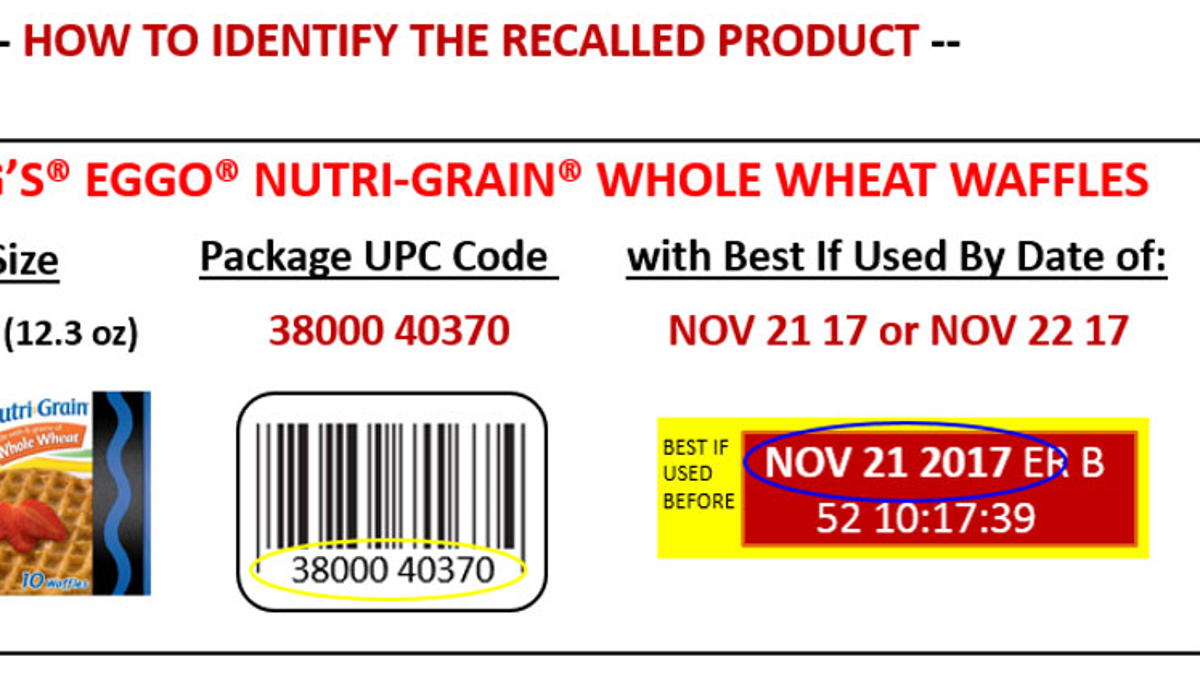
(Courtesy Kellogg)
Kellogg announced on Monday that it is recalling approximately 10,000 cases of Eggo Nutri-Grain Whole Wheat Waffles due to possible contamination with the bacteria Listeria monocytogenes.
However, no one has been sickened by the waffles at this point, according to the company.
Kellogg said in a statement that the recall was "the result of routine tests that the company conducts which identified the potential for contamination."
There are several ways that bacteria such as Listeria can get into food products, said Benjamin Chapman, a food safety specialist and an associate professor at North Carolina State University.
One way is if the bacteria make their way into the food-processing plant, Chapman said.
When food safety experts look for contamination in food-processing plants, they divide the factory into several zones, and take "environmental samples" from each zone on a regular basis, Chapman told Live Science. Zone 1 is always the closest to the actual food product — for example, any surfaces that the food touches are considered zone 1, Chapman said.
As you move farther away from the food, the zone numbers go up, Chapman said. Zone 2 includes the areas adjacent to or above the food-contact surfaces, zone 3 includes the walls, floors and drains in the plant and zone 4 would include other parts of the building that aren’t in the processing area itself, such as bathrooms and offices, he said.
The zone that contaminants are found in helps determine how a company responds, Chapman said. If a company finds Listeria in zone 1 — a food-contact surface — there's a "definite potential" that the Listeria contacted the food and got into the product, he said. If it was a different zone, there's a less likely chance that Listeria made its way into the product, he said.
Kellogg has not revealed where Listeria may have been found.
More From LiveScience
It's possible that the Listeria was found in tests of the waffles themselves, Chapman said. If this is what happened, investigators would go back and look at the process of making the waffles and the ingredients, to try to find the source of the contamination, he said.
Ideally, these tests will catch contaminants such as Listeria before the food leaves the factory.
But depending on the types of tests that are used, it may take a few days for results to come back, Chapman said. In some cases, a second test will be used to confirm the results of the first test, which takes additional time, he said.
Freezing growth
Listeria can survive being frozen, Chapman said. That means that if the bacteria were present in frozen waffles, it could live on in your freezer.
If a person were to then take a waffle out of the freezer and let it thaw at room temperature, that would give the bacteria the chance to grow, Chapman said.
The heat of toasting a waffle would likely kill Listeria, Chapman said. But still, it would be difficult to make sure that the temperature has reached high enough in all the nooks and crannies, he said.Originally published on Live Science.
Copyright 2016 LiveScience, a Purch company. All rights reserved. This material may not be published, broadcast, rewritten or redistributed.